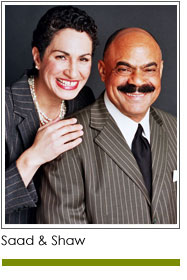 It’s a funny thing how we credit others with super powers and become intimidated based on what we think we know. Here’s our advice: don’t be intimidated. Learn what contributes to success and get to work, day-by-day, building a culture of success.
It’s a funny thing how we credit others with super powers and become intimidated based on what we think we know. Here’s our advice: don’t be intimidated. Learn what contributes to success and get to work, day-by-day, building a culture of success.
We understand the reality that for most organizations there is always a nonprofit, college or hospital that is more successful or more well known. There are organizations that are bigger, more established, more nimble, or with a larger budget. Sometimes when we begin work with a client one of the first things we learn is all the reasons why they can’t be successful. We listen, but at the same time we believe each organization can rise to the occasion, become an equal, or surpass their peers.
We suggest focusing on your organization and your uniqueness. Don’t compare yourself to others: compare yourself to the standards of nonprofit excellence. You can improve your position in the philanthropic market, the first step is making organizational excellence a priority.
The following is a long list of the types of things that peer organizations may have achieved and that may intimidate you: longer tenure in the community; bigger budget; more volunteers; more attention from media; more funding from stakeholders; status as the “in thing;” reduced turnover of staff and volunteers; well performing data management program; and total buy-in for what they are selling in the marketplace.
And here’s more of that long list: staff is qualified and experienced; service niche is well defined; excellent stewardship program; coordinated communication and reporting throughout the organization; well run annual campaign; donor recognition and acknowledgement is unique and meaningful; well trained volunteers; engaged board; and a donor base that continues to grow combined with low donor attrition. They have done their research and conducted a feasibility study; they have a successful track record of implementing their mission and exceeding their goals; and participation in fundraising is expected of everyone associated with them. Most distressing: They are a household name across the community and everyone wants to partner with them
You may feel intimidated because your peers have done a good job at making sure these things are part of their culture. Here’s the truth: the things listed above are at the core of effective nonprofits. We are highlighting these so you and your board can create a game plan for how to increase your organization’s competitiveness. Don’t spend your time focused on the “advantages” that others have over you. Don’t be envious: follow their lead. Develop a game plan, implement it, stay with it, and allow it to bear fruit.
Here’s one more thing to remember: none of us are “all that.” Every organization has its challenges and areas that need improvement.
Our bottom line: Focus on becoming the best nonprofit you can be. Read Prerequisites for Fundraising Success our book with specific suggestions on how to grow your nonprofit and increase your fundraising.
Copyright 2017 – Mel and Pearl Shaw
Mel and Pearl Shaw are authors of four books on fundraising available on Amazon.com. For help growing your fundraising visit www.saadandshaw.com or call (901) 522-8727.












